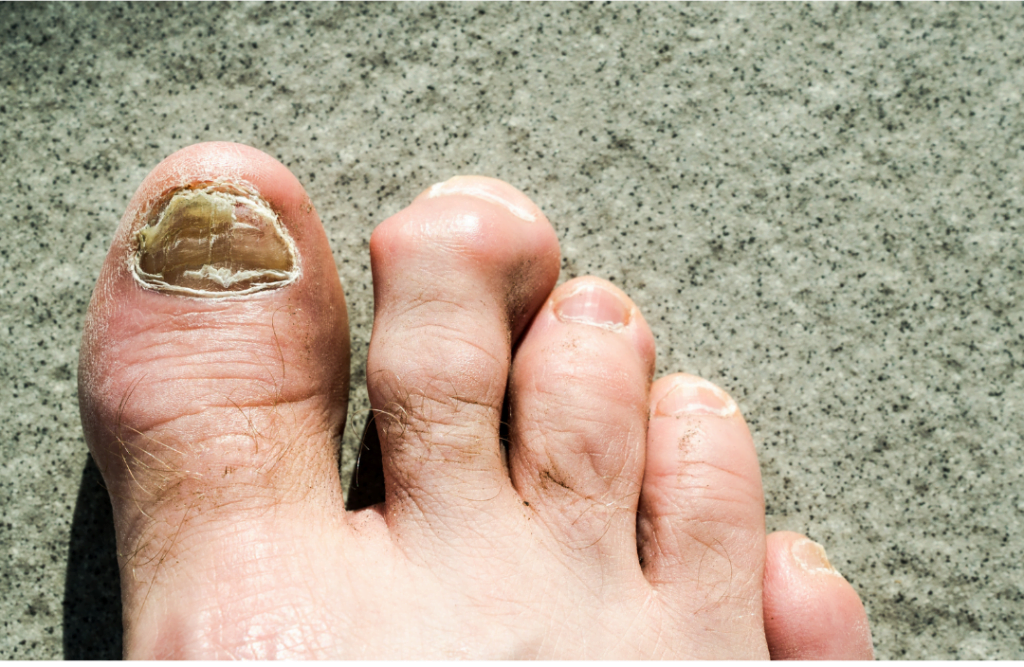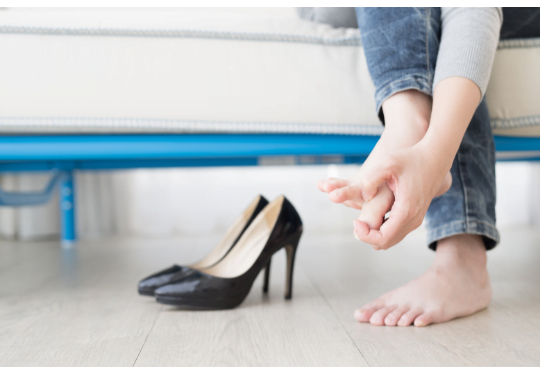The human foot, a remarkable and intricate structure, is a marvel of biological engineering. It is a complex interplay of 26 bones, 33 joints, and more than a hundred muscles, tendons, and ligaments. This intricate network not only provides the foundation for human mobility but also acts as a shock absorber and balance mechanism during various activities. However, due to its complex structure and constant use, the human foot is also vulnerable to an array of complications and ailments.
Statistically speaking, only a quarter of Canadians and Americans will evade foot problems during their lifetime, leaving a staggering 75% likely to encounter one or more issues. These problems can stem from a variety of sources, including genetic predisposition, injuries, or simply overuse from activities like running or standing for extended periods.
Foot conditions can significantly impact an individual’s quality of life, causing pain, discomfort, and sometimes even debilitating impairment. These issues can manifest themselves in a variety of ways, from minor inconveniences to severe conditions that might necessitate medical intervention. They can also result in ancillary problems such as mobility challenges, affecting the ability to walk or stand effectively.
In this discussion, we will delve into some common foot problems, exploring their cause, symptoms, and potential treatment options.
Bunions
A bunion, medically referred to as Hallux Valgus, is a deformity affecting the metatarsophalangeal (MTP) joint at the base of the big toe. This deformity manifests as the big toe deviating towards the second toe, causing the MTP joint to protrude outward. This can make walking or wearing shoes a painful ordeal.

The etiology, or cause, of bunions is multifaceted, with genetics and lifestyle factors playing a significant role. For instance, wearing constrictive, narrow shoes is a predominant lifestyle factor that contributes to bunion development. Other factors include arthritic conditions, trauma, and congenital disabilities.
While there isn’t a definitive cure for bunions, there are several palliative treatments available to reduce pain and slow the progression of the deformity. These include wearing shoes with a wider toe box, utilizing bunion pads or splints, and in severe cases, surgical intervention to correct the alignment of the toe.
Hammertoe
A hammertoe is an abnormality of the proximal interphalangeal joint of the toe, which causes it to resemble a hammer due to a bend in the middle joint. This deformity can lead to discomfort and difficulty in fitting certain types of shoes.

Corns and Calluses
Corns and calluses are hyperkeratotic lesions—thickened areas of skin—that form in response to repeated friction and pressure. Corns are typically small and round, primarily forming on the toes, while calluses are larger, flatter, and often develop on the balls of the feet. Though not inherently harmful, they can cause discomfort. Treatments include using keratolytic creams and pads, soaking feet in warm water, and debridement, the removal of the thickened skin using a scalpel or pumice stone.

Plantar Fasciitis
Plantar fasciitis refers to the inflammation of the plantar fascia, a thick band of tissue running along the bottom of the foot from the heel to the toes. This condition can cause significant discomfort and difficulty standing or walking for extended periods.
Achilles Tendonitis
Achilles tendonitis is an inflammation of the Achilles tendon—the robust tendon connecting the gastrocnemius and soleus calf muscles to the heel bone. This condition can cause discomfort and hinder walking or running activities.
Flat Feet
Flat feet, or pes planus, is a condition where the foot’s arch collapses, resulting in the entire foot coming into contact with the ground. This can lead to pain and difficulty in walking or standing for long periods.
Foot Fractures
Foot fractures refer to a break in any of the foot’s bones. These fractures can be excruciatingly painful and may require immobilization, the application of casts, or even surgery to ensure proper healing and alignment.
Ankle Sprains
An ankle sprain involves the stretching or tearing of the ligaments that provide stability to the ankle joint. Depending on the severity, ankle sprains can cause significant pain and may require immobilization or surgical intervention to facilitate recovery.
Ingrown Toenails
Onychocryptosis, commonly known as an ingrown toenail, occurs when the edge of the toenail grows into the adjacent skin. This can lead to pain, inflammation, and sometimes an infection. Factors contributing to ingrown toenails include wearing tight shoes, improper nail trimming, or trauma to the toe. Treatment may involve soaking the foot in warm water, wearing shoes with ample space for the toes, correct nail trimming techniques, or, in severe cases, surgery to remove the ingrown section of the nail.
Athlete’s Foot
Tinea pedis, or athlete’s foot, is a fungal infection typically affecting the skin between the toes. It can cause symptoms such as pruritus (itchiness), erythema (redness), and desquamation (scaling) of the skin. This condition often spreads via contact with contaminated surfaces, such as communal shower floors. Treatment options include topical antifungal creams, powders, or in severe cases, systemic oral antifungal medication.
Plantar Warts
Plantar warts, or verrucas, are small lesions that typically appear on the pressure points on the soles of the feet. They are caused by the human papillomavirus (HPV) and can be spread through contact with contaminated surfaces. These warts can cause discomfort and difficulty walking. Treatments include over-the-counter wart removal solutions, prescription antiviral medication, or surgical removal in persistent cases.
This list is by no means exhaustive, and a multitude of other foot-related conditions can affect individuals. If you have any concerns about your foot health, it is recommended to consult a podiatrist—a medical specialist dedicated to diagnosing and treating foot and ankle conditions.
At Ogden Pharmacy at Calgary, Alberta, we can assist in assessing some of your foot problems and recommend over-the-counter medications based on your case and the scope of practice.
Don’t let foot problems keep you from enjoying your life to the fullest. Reach out to Ogden Pharmacy at 587-391-9878, or if you live in Ogden or Riverbend, drop by our Calgary location at Lynnwood Plaza beside Food Street Pizza. Our experienced pharmacists are ready to help with your foot problems or other minor ailments you may be experiencing. We believe in proactive care and will work with you to address your concerns and find a solution that works best for you.






